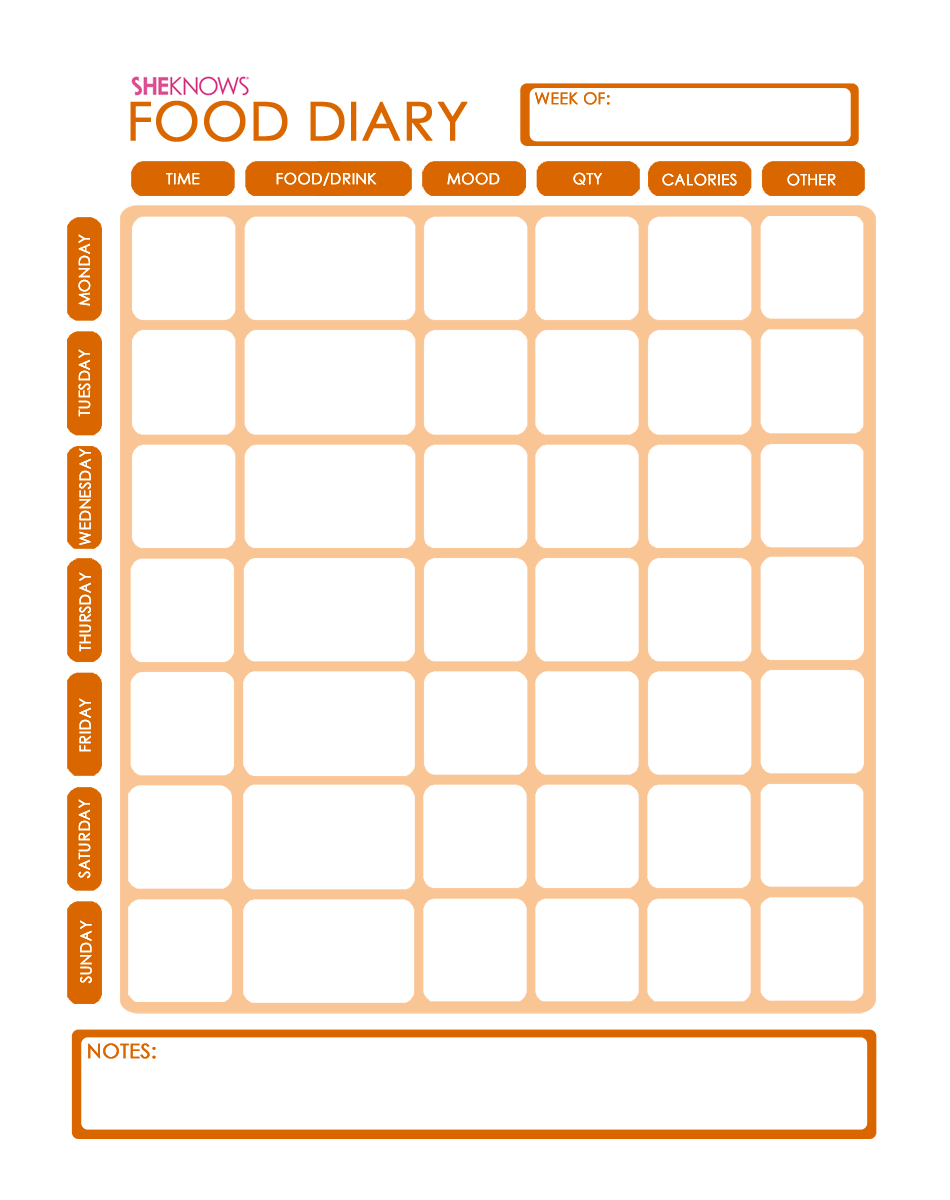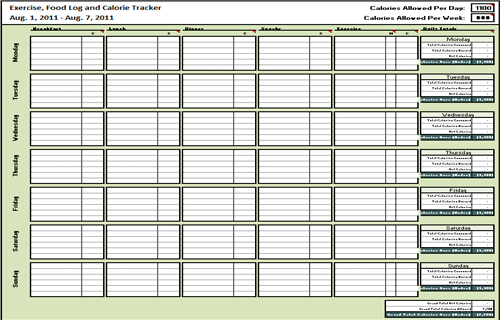In today’s fast-paced world, it is essential to pay attention to what we eat. With so many processed and fast food options available, it is easy to forget the importance of a healthy diet. That’s where keeping a food journal can be a game-changer. Not only does it help us stay on track with our eating habits, but it can also serve as a reference point for our doctors, nutritionists, or dietitians.
5 Free Food Journal Templates
 The first template we have is a simple yet effective design that allows you to track your meals, snacks, and drinks throughout the day. You can record details such as the type of food, serving size, and calorie count. With a designated space for notes, you can also add any additional information such as allergies or food intolerance.
The first template we have is a simple yet effective design that allows you to track your meals, snacks, and drinks throughout the day. You can record details such as the type of food, serving size, and calorie count. With a designated space for notes, you can also add any additional information such as allergies or food intolerance.
 The second template offers a more detailed approach to monitoring your meals. You can not only track the type of food and serving size but also the time of day you consumed it. This can help you identify patterns in your eating habits, such as eating more during certain times of the day.
The second template offers a more detailed approach to monitoring your meals. You can not only track the type of food and serving size but also the time of day you consumed it. This can help you identify patterns in your eating habits, such as eating more during certain times of the day.
 The third template caters to those who prefer a colorful and vibrant design. It allows you to track your meals, snacks, and beverages for each day of the week. With sections for breakfast, lunch, dinner, and snacks, you can record all your dietary intake in one place.
The third template caters to those who prefer a colorful and vibrant design. It allows you to track your meals, snacks, and beverages for each day of the week. With sections for breakfast, lunch, dinner, and snacks, you can record all your dietary intake in one place.
 The fourth template focuses on tracking the nutritional value of your meals. You can record the macronutrient values of each food item, including the number of calories, carbohydrates, proteins, and fats. This template is perfect for those who are mindful of their macros and want to ensure they are meeting their daily requirements.
The fourth template focuses on tracking the nutritional value of your meals. You can record the macronutrient values of each food item, including the number of calories, carbohydrates, proteins, and fats. This template is perfect for those who are mindful of their macros and want to ensure they are meeting their daily requirements.
 The fifth and final template is a comprehensive food journal that allows you to track every detail of your dietary intake. You can record the type of food, serving size, calorie count, time of day, and even the location where you ate it. The template also includes a section for notes, allowing you to add any additional information you deem necessary.
The fifth and final template is a comprehensive food journal that allows you to track every detail of your dietary intake. You can record the type of food, serving size, calorie count, time of day, and even the location where you ate it. The template also includes a section for notes, allowing you to add any additional information you deem necessary.
No matter which food journal template you choose, it is essential to use it consistently and accurately. Keeping an accurate record of your dietary intake can help you identify areas where you need to make changes and ensure that you are getting all the nutrients you need to maintain a healthy and balanced diet.
Benefits of Keeping a Food Journal
There are numerous benefits to keeping a food journal. Some of the benefits include:
1. Tracking calorie intake
By keeping a food journal, you can easily track your calorie intake. This is especially helpful if you are trying to lose weight or maintain a healthy weight. By monitoring your calorie intake, you can ensure that you are not consuming more calories than you burn, which can lead to weight gain.
2. Identifying food intolerances
If you are experiencing unexplained symptoms such as bloating, headaches, or fatigue, keeping a food journal can help you identify if there is a particular food that is causing these symptoms. By noting what you eat and any symptoms you experience, you can work with your doctor or nutritionist to identify if there is a specific food you need to avoid.
3. Understanding eating habits
Keeping a food journal can help you understand your eating habits. By tracking the time of day you eat, what you eat, and how much you eat, you can identify patterns in your eating habits. For example, you may discover that you snack more frequently in the afternoon or that you tend to eat larger portions at dinner.
4. Setting and achieving dietary goals
Keeping a food journal can help you set and achieve dietary goals. By tracking your dietary intake, you can identify areas where you need to make changes to achieve your goals. For example, if you want to increase your protein intake, you can track your protein intake and make adjustments to your diet accordingly.
How to Use a Food Journal
Using a food journal is a simple and effective way to monitor your dietary intake. Here are some tips on how to use your food journal effectively:
1. Record everything you eat and drink
It is essential to record everything you eat and drink, including snacks and beverages. Even if you consume a small amount of food or drink, it’s important to record it to ensure that you are correctly monitoring your dietary intake.
2. Be as precise as possible
When recording your dietary intake, be as precise as possible. This includes the type of food, serving size, and calorie count. If you are unsure about the serving size or calorie count, use measuring cups or refer to nutritional labels to ensure accuracy.
3. Be consistent
Consistency is key when using a food journal. Try to record your dietary intake every day at the same time. This will help you create a routine and make using a food journal a habit.
4. Review your food journal regularly
Make it a habit to review your food journal regularly. This will allow you to identify patterns in your eating habits and make changes accordingly. It will also help you stay accountable for your dietary intake and ensure that you are on track to achieving your dietary goals.
Conclusion
A food journal can be an incredibly useful tool for anyone looking to maintain a healthy and balanced diet. It allows you to monitor your dietary intake, identify patterns in your eating habits, and even help you achieve your dietary goals. With these five free food journal templates, you can choose the one that suits your needs and get started on your journey towards a healthier lifestyle today.